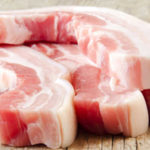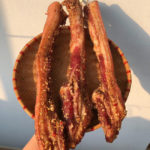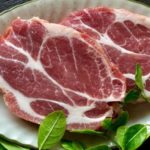How to choose pork belly at the market
Pork belly is a cut of meat that has layers of meat and fat. There are two types of pork belly: the top part and the bottom part. The top part is the meat near the ribs with a lot of fat, thin and slightly tough meat, which can be greasy when eaten quickly. The bottom part is the meat under the belly of the pig, which contains muscle, so the meat is firm. It usually has 3-5 layers of marbled fat, tender and sweet meat, and is not greasy. It is recommended to choose this part as it will taste better when boiled.
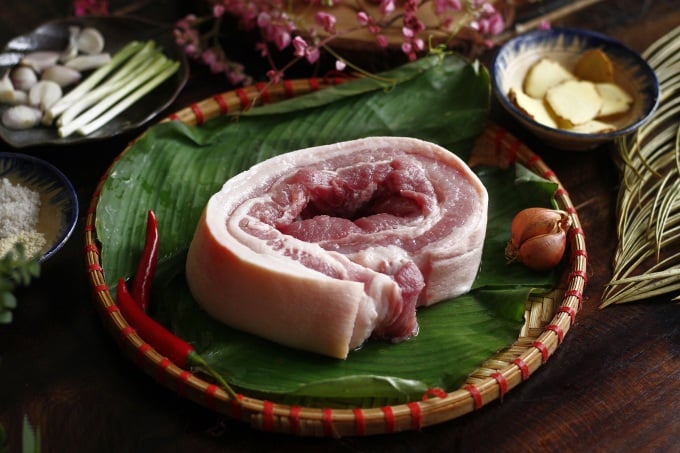
Pay attention to choose pork belly with a natural bright pink color, solid meat, and thin skin. When pressed, it should have good elasticity. Avoid buying meat that has changed color, has a strange smell, lacks elasticity, and feels soft and spongy. These are signs that the meat has been stored for a long time and may not be safe for consumption.
After buying the pork belly, clean it by removing the hair, rubbing it with lemon and salt, and then rinsing it thoroughly. Salt and lemon help remove any odor, and the citric acid and vitamin C in lemon make the meat fresher and tastier. To remove impurities, you can blanch the meat briefly in water at 70-80 degrees Celsius and then rinse it thoroughly.
Thoroughly cleaning and preparing the meat will ensure that it is flavorful when boiled and make full use of the broth for cooking delicious soup.
The right way to boil pork belly
Boil water in a pot with ginger, spring onion, and spices. When the water boils, reduce the heat and place the pork belly in to simmer gently. Boiling the meat in hot water helps it retain its nutrients and sweetness. Simmering on low heat allows the meat to cook slowly from both the outside and inside, and ensures that the meat remains tender, with a light pink color, resembling the texture of restaurant-quality pork belly.
The cooking time for boiling pork belly may vary depending on the size and thickness of the meat. Typically, after 15 minutes, the meat will be cooked through. Turn off the heat, cover the pot, and let the meat soak in the broth. This will make the meat tender, flavorful, and prevent it from turning red or dark on the outside.
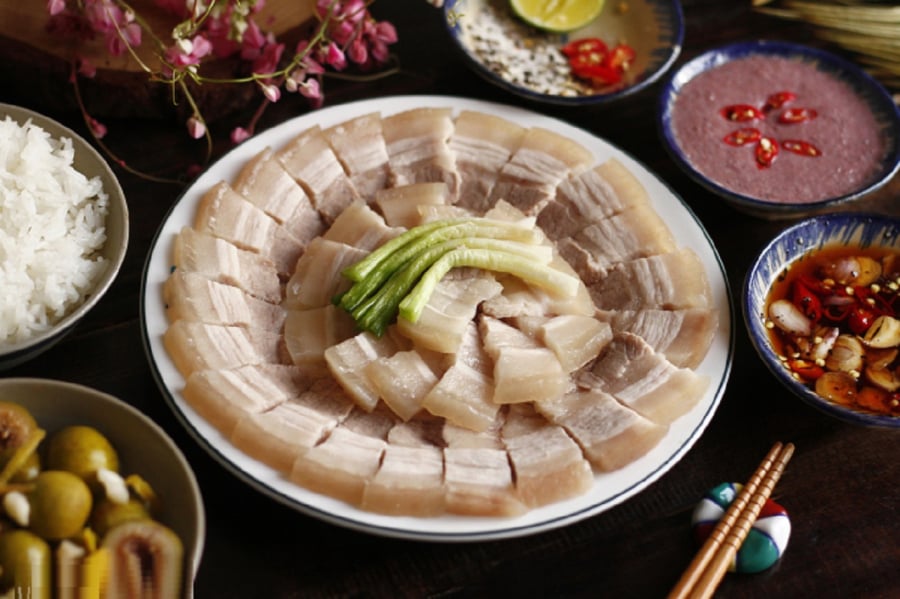
Delicious dipping sauce for pork belly
The dipping sauce can vary depending on personal taste and regional preferences. The simplest and most common dipping sauce is a mixture of salt, pepper, and lime. In the northern region of Vietnam, people often dip the boiled pork belly in fermented shrimp sauce mixed with a little sugar and lime. In Hue, there is a sour fermented shrimp sauce, and in Danang, they usually use shrimp paste as a dipping sauce. In the southwestern region of Vietnam, boiled pork belly is often served with fish sauce made from linh fish, which is very delicious. This dish is simple, easy to make, and satisfies everyone’s taste buds all year round.
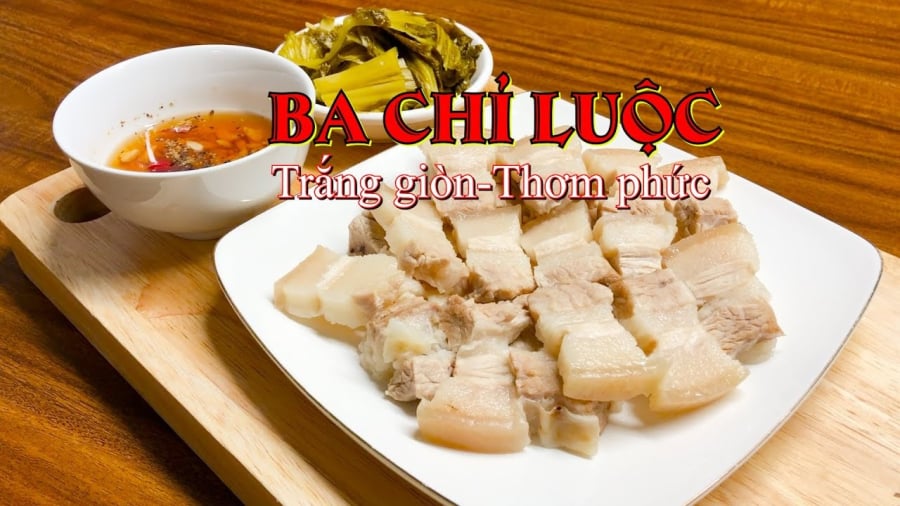
Common mistakes that make boiled pork belly less delicious
Overcooking: Many people are afraid that the meat is not fully cooked, so they boil it for too long to ensure it is well done. However, boiling the meat for too long can make the fat part dry and the entire piece of meat mushy, resulting in loss of sweetness and becoming greasy when eaten quickly. Boiling the meat for too long can also affect its nutritional value. According to experts, at temperatures of 200-300 degrees Celsius, amino acids, creatinine, sugar, and harmless compounds in meat can undergo chemical reactions, forming some harmful substances. Therefore, when boiling the meat, it is best to cook it until it is just cooked through, so that the meat retains its sweetness, aroma, and tenderness.
Adding cold water: Adding cold water to a pot of boiling water is a common mistake that many people make when they see the water level getting low. The sudden drop in temperature will cause the proteins and fats to immediately coagulate, the gaps and openings in the meat will become smaller, making it harder and less tender, and the fat part will become firmer. This will result in the loss of the fresh, delicious taste of the meat. Therefore, it is advisable to add enough water to fully cover the meat when boiling it, and if needed, add boiling water instead of cold water when replenishing the pot.
Poking and checking constantly: Due to fear or the desire to control the doneness of the meat, many people constantly poke holes in the meat or flip it during the boiling process. This will cause the sweet juices in the meat to seep out, resulting in loss of sweetness and drier meat.
Slicing the meat immediately after boiling: Some people slice the meat right after boiling to ensure its hotness. This is a mistake as it will make it difficult to slice the meat neatly and precisely because it is still soft and fragile. It is best to let the meat sit in lukewarm water for about a minute before slicing it. This way, the meat will still be warm and flavorful, and visually appealing.

























